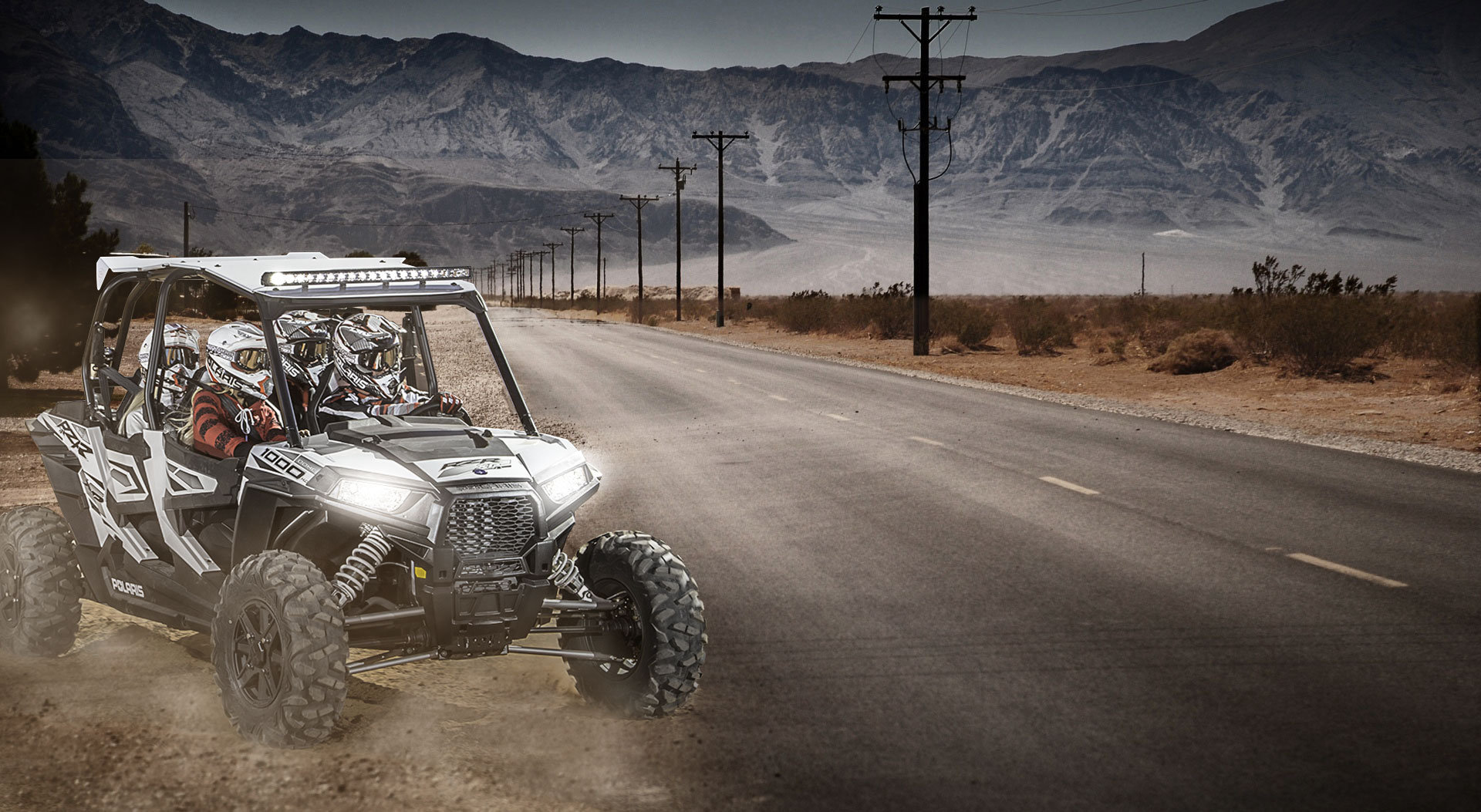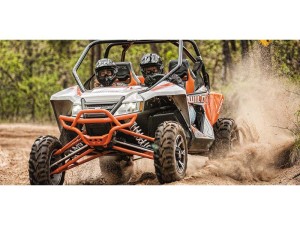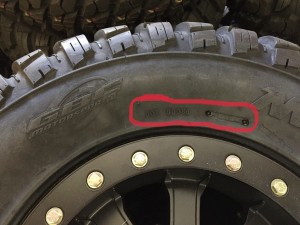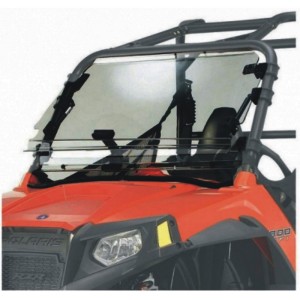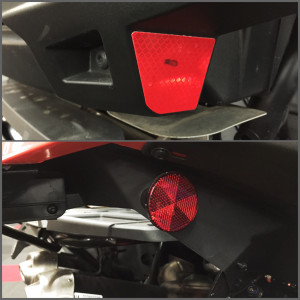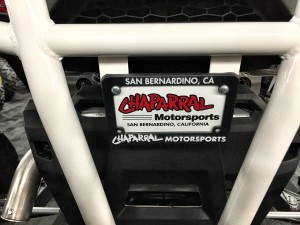Street Legal Side-By-Sides: How To Make Your UTV Street Legal
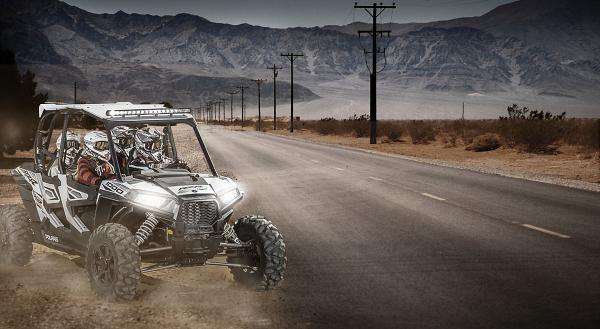
A few months ago while spending some time in one of San Diego's beach cities I was walking to grab some lunch when I spotted a Polaris RZR XP4 1000 sitting at a traffic signal waiting to make a left. It struck me as really odd since I had never realized that you could operate a UTV as a street legal vehicle in California. As I kept walking I was admiring the machine as it made its turn and then I noticed the Arizona license plate mounted on the back and it made a little more sense.
It's an unfortunate cost of living in California, but if you're thinking about getting your RZR or any side-by-side for that matter registered as a street-legal vehicle with CA plates, don't hold your breath. I'm not saying it can't happen because there are people who have gotten it done. Here is a very abridged version as to why a UTV can't be registered for highway use. California has the Air Resources Board (CARB) office, which has established strict emission standards and guidelines for on- and off-highway vehicles. Manufacturers must meet certain standards to attain a sticker indicating their vehicles are for on-highway use. UTVs/Side-by-Sides are considered off-highway vehicles, do not meet on-highway emission regulations, and cannot be registered as on-highway vehicles.
Other states are much more lenient and do allow you to register your UTV as an on-highway vehicle. This can be very convenient and make things much simpler, especially when you want to hop from trail to trail and can do so by legally driving down the highway, or if you want to drive your RZR from the camp site to the local downtown area for a nice dinner or to restock on supplies.
To get your Side-by-Side street legal you're going to have to add a few accessories or required components to meet federal and your state's requirements. The only problem is there isn't a universal list that you can go by to meet on-highway vehicle requirements. All states are different and even some counties or municipalities may differ as well, so the best thing to do before you start spending any money trying to convert your RZR or Arctic Cat Wildcat to a street legal machine is check with your state's motor vehicle department and make sure it's even possible to legally drive your UTV on the highway or city streets. You may also want to check with the area or community that you'll be driving in and make sure they don't have any special or additional requirements beyond what the state lists. If you find out that it is possible to register your vehicle for highway use then make a list of everything that's required and start modding your machine.
Here are some of the more common things that are required in order for your UTV to be considered legal for highway use:
UTV Headlights
Pretty much all UTVs are sold with headlights these days so you should be good to go. However, if you want to improve upon the stock setup to for better off-road visibility there are plenty of options. For example Warn offers 7" and 4" off road H.I.D Driving Lights that are not only 300-percent brighter than standard 55 watt halogen bulbs but also draw less current and last much longer. Just be aware that some states may not allow you to use off-road lights as your headlights on the highway.
UTV Tail Lights and Brake lights
Most UTVs have two lights at the rear of the vehicle (one on each side) that operate as both the taillights and brake lights. Tail light (or running lights as they are sometimes called) come on and stay light when the vehicle is on or running. Brake lights are brighter than the tail light and illuminate only when the brakes are applied. Some of the late model RZRs utilize LED lighting while the rest of the UTVs use traditional halogen bulbs.
UTV Turn Signals
Adding turn signals/blinkers to your UTV is a very easy affair, especially with companies like Dux Signal Kits offering complete plug-n-play assemblies. The Dux kits help you get street legal by providing four bright mini LED lights (2 front/2 rear), a wiring harness with color-coded and labeled wires, a turn signal switch that mounts to the steering column (just like on a normal vehicle), and a flasher for hazard/emergency situations. The kit even includes a 105bd motorcycle horn with a sealed rubber button.
DOT Tires for UTV
More than likely your UTV didn't come with DOT tires, you can quickly tell if your tires are highway legal by searching for the DOT code molded into the side wall. The code starts with the letters DOT followed by a combination of letters and numbers. The last four numbers in the code will tell you when the tire was manufactured. The first two numbers represent the week while the last two represent the year. More and more companies are offering an assortment of DOT approved UTV tires like the GBC Konati Mongrel and GMZ Cutthroat.
Windshield for UTV
There is a lot of dirt, rocks, twigs, and other debris that can severely affect your vision when operating a UTV both on and off road, so adding a windshield to your machine is always a good idea. Some states require windshields for highway use unless the driver is wearing sunglasses, goggles or some other type of approved eye protection. UTV Windshields come in a lot of styles from full coverage to half, there's even the Polaris Flip out windshield that offers adjustability so you can increase or decrease the amount of air flow.
Mirrors for UTV or Side by Side
Most UTVs don't come with mirrors but if you are going to operate one on the streets states require a rear view mirror and either one (drivers side) or two side view mirrors (one on each side). Installing mirrors is really easy as there are many companies like Axia Alloys which offer various mounts that secure to the different sized roll bars and then there's a selection of mirror accessories you can add on. The Ocelot Universal Side View Mirrors are designed to work on either the left or right side of the vehicle and with their 5" convexed lens provides a wider view angle and help reduce blind spots.
Horn: If you don't use a turn signal kit that comes with a horn like the Dux Signal Kit mentioned above, there are plenty of other places you can find horn that will work. For example, Polaris offers its Horn Kit which is a plug-n-play unit. There is also an assortment of inexpensive motorcycle horns like Biker's Choice Custom Electric Horn that can easily be mounted and wired up to your UTV. If you do have to add a horn make sure you know your state's sound level requirements.
Reflectors
In addition to being properly lit with headlights and brake/taillights you may also find that some states require the back of the vehicle to have reflectors on either side. Reflectors will reflect light helping others on the road see your machine. Most UTVs come with either plastic or sticker reflectors incorporated into the rear body work or mounted somewhere on the frame. If you find that your machine doesn't have a reflector you can easily add one. Most plastic reflectors have adhesive backing allowing you to stick them just about anywhere. You could also possibly just use reflective tape. Just be sure to find out where on the vehicle reflectors are required and if they have to be of a certain color (ie. red, orange, or white).
License Plate Mount and Light
If you get your UTV registered for the street you're going to need a way to properly and securely display the license plate. Most states require that the license plate be mounted to the rear of the vehicle. Some roll cages have tabs welded to them so you can bolt up a license plate frame. When operating the vehicle on the highway during night time or low light conditions the plate needs to be illuminated so those behind you can see it. Some of the turn signal kits come with a small white light to illuminate the plate otherwise there are plenty of other solutions like a simple LED strip.
It's not just parts or accessories that you may need to legally drive your UTV on city streets or roadways, you'll probably also need to have your vehicle properly insured (most often liability insurance), a valid driver's license, and the machine might even have to pass an emissions/smog test.
Most UTVs come with things like headlights, brake/taillights, and reflectors, so a portion of the work/expense of becoming street-legal is already taken care of. The nice thing is it's often pretty painless to convert your UTV to a street legal machine. Once you have everything on your list marked off, one last step you might have to do is get your vehicle inspected by a state official, approved shop, or just bring in receipts and/or documentation proving you met the requirements. Again this varies from state to state so be sure to find out what the process is before you get started. And make sure you really read all the regulations because they are often very specific about things like turn signal size and placement. You don't want to spend a ton of time and money bolting a bunch of parts and accessories to your UTV only to find out it's still not road legal because you overlooked the specifications.
In states like Washington and Arizona getting your UTV setup for street legal driving is pretty easy and straight forward.
Requirements for modifying your UTV/Side-by-Side for on-road use in Washington state include:
- Head lamp
- Two Tail lamps
- Stop lamp
- Reflectors
- Turn signals
- Brakes
- Two Mirrors
- Horn or warning device
- Spark arrester and muffling device
- Windshield (unless the driver wears glasses, goggles, or a face shield of a type conforming to rules adopted by the state patrol)
- Seatbelts (or safety harnesses)
You can read more on the Washington State Department of Licensing website
In order to convert your Side-by-Side to a street-legal, road worthy machine in Arizona you must have:
- At least one brake which can be operated by hand or foot
- Brake light
- At least one, but not more than two, headlights which shine at least 500 feet ahead
- At least one taillight visible for at least 500 feet to the rear
- At least one red rear reflector, if not part of the taillight
- License plate securely fastened to the rear of the OHV
- License plate light
- A horn audible from a distance of at least 200 feet
- A muffler in good working order and in constant operation (muffler cutout, bypass or similar device prohibited)
- Rearview mirror
- Seat and footrests for the operator
- Fuel tank cap
- If you live in the Phoenix or Tucson metro areas you may also need to have your OHV emissions tested
You'll also need to carry insurance to ride your ATV on roads or highways. Be sure to have your registration and insurance card with you when riding the vehicle. A valid driver's license is required on city, county, and state roads and highways as well as some Forest Service roads and BLM-maintained roadways.For more information about making your UTV street-legal check out the Arizona Off-Highway Vehicle Guide
Polaris off-road vehicles are designed and intended for off-road use only. Modifications made to off-road vehicles can negatively affect the vehicle's stability or handling, increasing the risk of injury in a rollover or collision event. Users and drivers of off-road vehicles, like a side by side or Polaris utility vehicles should not disregard the safety warnings provided by the manufacturer (regardless of the state or other laws or regulations allowing such usage.) These safety warnings are clearly displayed on the vehicle, and can be found in your owner's manual.

